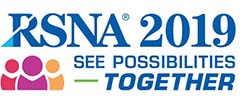

ParticipantsIbrahim Yel, MD, Frankfurt, Germany (Presenter) Nothing to Disclose
Christian Booz, MD, Frankfurt am Main, Germany (Abstract Co-Author) Speaker, Siemens AG
Simon S. Martin, MD, Charleston, SC (Abstract Co-Author) Institutional Research support, Siemens AG
Lukas Lenga, Frankfurt, Germany (Abstract Co-Author) Nothing to Disclose
Thomas J. Vogl, MD, PhD, Frankfurt , Germany (Abstract Co-Author) Nothing to Disclose
Moritz H. Albrecht, MD, Charleston, SC (Abstract Co-Author) Speaker, Siemens AG
Carlo N. De Cecco, MD, Atlanta , GA (Abstract Co-Author) Research Grant, Siemens AG
Benjamin Kaltenbach, MD, Kelkheim, Germany (Abstract Co-Author) Nothing to Disclose
dr.ibrahimyel@gmail.com
PURPOSEDespite a wealth of literature on dual-energy CT(DECT) iodine uptake in various pathologies, physiologic reference values for this technique for confident clinical application have not been defined to date. Therefore,we investigated the iodine uptake of healthy abdominal and pelvic organs in a big data cohort.
METHOD AND MATERIALSConsecutive portal-venous abdominal DECTs were reviewed and unremarkable exams were included (n=520; white/asian=489; mean age=59±15,5 years; 265w/255m). ROI-measurements were performed in the following anatomical regions (number of ROIs): liver(9), pancreas(3), spleen(3), adrenal glands(2), kidneys(6), prostate(4), uterus(2), urinary bladder wall(1) and lymph nodes (3). Iodine uptake was compared among different organs and subgroup analysis was performed (young vs old/male vs female).
RESULTSOverall mean iodine uptake values were as followed (mg/ml): liver=1.93±0.54, pancreas=2.06±0.57, spleen=2.55±0.65, adrenal glands=1.66±0.43, kidneys=6.28±1.36, prostate=1.11±0.52, uterus=1.07±0.74, bladder=0.69±0.29 and lymph nodes=0.75±0.21. Portal-venous iodine uptake was comparable between liver/pancreas and liver/adrenal glands (p>=0.119). Women showed higher iodine uptake for liver (2.07±0.58 vs 1.79±0.45mg/ml), pancreas (2.29±0.57 vs 1.83±0.47mg/ml), spleen (2.81±0.65 vs 2.30±0.53mg/ml), adrenal glands (1.76±0.49 vs 1.56±0.33mg/ml) and kidneys (6.74±1.36 vs 5.83±1.20mg/ml) than men(p<0.001). In older patients,iodine uptake increased for liver (1.98±0.52 vs 1.87±0.54mg/ml), spleen (2.48±0.65 vs 2.63±0.64mg/ml) and kidneys (6.11±1.24 vs 6.45±1.45mg/ml) compared to younger subjects (p<=0.040). Only the uterus showed lower values in older women (0.77±0.45 vs 1.35±0.84mg/ml, p<0.001).
CONCLUSIONPhysiologic iodine uptake values show age- and gender-related differences for the liver, spleen and kidneys. Pancreas and adrenal glands show higher iodine perfusion in women. While prostate parenchyma seems unaffected throughout lifetime, iodine supply of the uterus decreases in elderly women. Lymph nodes and bladder are unaffected by demographic influences.
CLINICAL RELEVANCE/APPLICATIONWe defined physiologic reference values for static perfusion of abdominal organs, as indicated by DECT iodine uptake in a big data cohort and described the related differences regarding age and gender, in order to facilitate more reliable clinical application of this technique and ultimately, potential implementation in future guidelines.